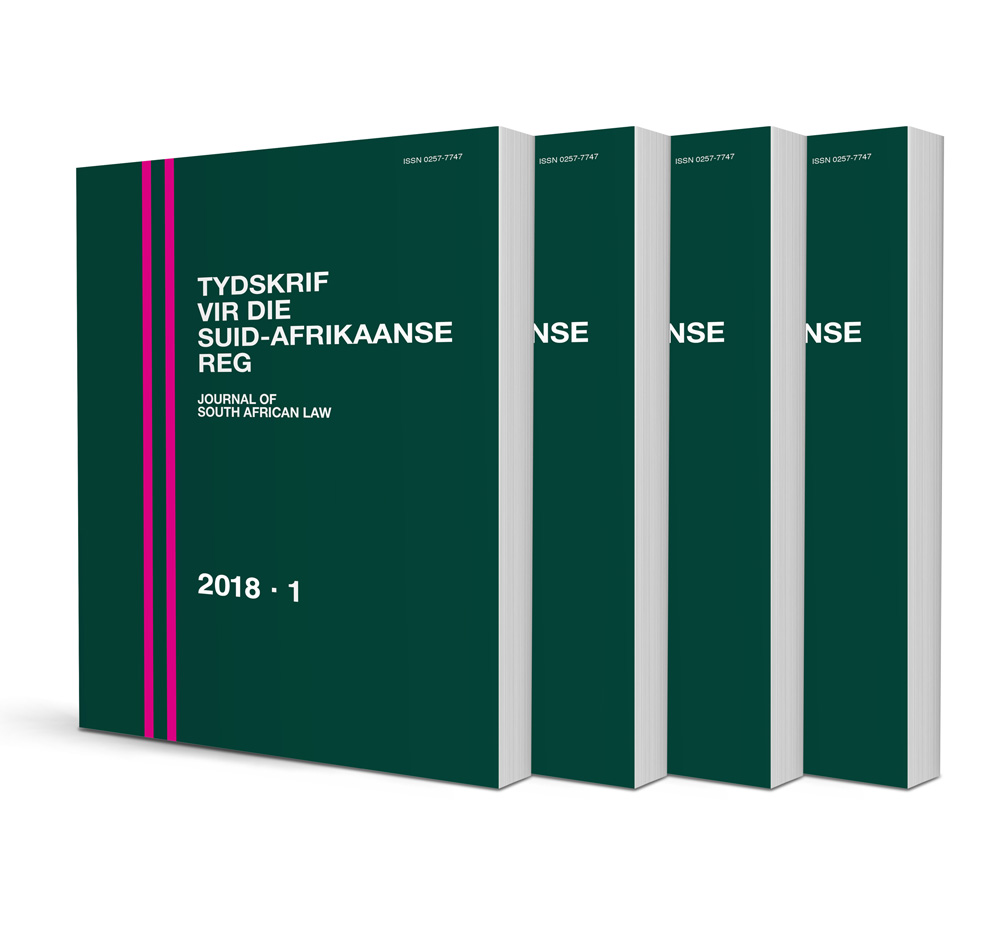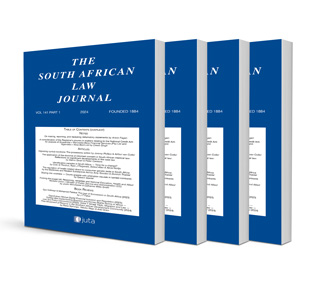Aantekeninge: Lessons from the landmark New South Wales appeal tribunal decision and three community schemes ombud service adjudications on smoking in sectional (strata) title schemes

Aantekeninge: Lessons from the landmark New South Wales appeal tribunal decision and three community schemes ombud service adjudications on smoking in sectional (strata) title schemes
Author: CG Van der Merwe
ISSN: 1996-2207
Affiliations: University of the Western Cape; University of the Western Cape
Source: Tydskrif vir die Suid-Afrikaanse Reg, Issue 2, 2023, p. 283 – 301
https://doi.org/10.47348/TSAR/2023/i2a6
Abstract
In ’n onlangse Nieu-Suid-Wallis beslissing beweer die applikant en sy eggenote dat nadat die respondent en sy metgesel agtien maande gelede in die woonstel vier meter direk onder hulle woonstel ingetrek het, sigaretrook vanaf die balkon van die respondente hulle eenheid deur luggate binnegedring het. Dit het gebeur ten spyte van die feit dat al die vensters en deure 95% van die dag toegemaak was. Die egpaar se gesondheid het daaronder gely en tranende oë, ’n lopende neus, ’n seer keel, aanhoudende gehoes, hoofpyn, liggeraaktheid, nukkerigheid, konsentrasieverlies en slapeloosheid is veroorsaak. Die applikante het maande lank sonder sukses gepoog om die probleem op te los deur middel van hoflike en diplomatiese e-posse, en mediasie. Daarna het dit nog ’n jaar en gedingvoering deur drie tribunale geneem om tot ’n finale beslissing te kom. Die appèl tribunaal het beslis dat gesondheidsverlies nie slegs deur direkte rookwalms veroorsaak kan word nie, maar ook later tweedehands weens die feit dat rook vasgekeer is in poreuse oppervlaktes soos matte, tapyte en meubelstukke. Die respondente het nie ontken dat hulle rook nie, maar gevra om toegelaat te word om op hul eie balkon te rook as die windsterkte vinniger as 10 kilometers per uur is. Volgens hulle het ’n voortdurende seebries afkomstig van die see kwalik 100 meter van die woonstelblok, die rook weggewaai. Die tribunaal beslis dat die applikante geen beskerming gebied kan word teen direkte of tweedehandse rook nie en beveel dat die respondente en hulle gaste verbied word om op die balkon te rook.
Die drie verbandhoudende aansoeke tot die Suid-Afrikaanse ombuddiens was dat die volgende gevalle neerkom op oorlas en dat die respondent verbied word om daarmee voort te gaan: die indringing van die reuk van marijuana, wierook, vuil water en ontsmettingsmiddels; vaporisering en die rook van e-sigarette deur huurders; en die aanbieding van marijuana partytjies in die woonstel. Die eerste aansoek is verwerp omdat die applikant nie voldoende getuienis gelewer het oor die intensiteit, voortdurendheid en die nadelige gesondheidsgevolge van die gedrag waarteen beswaar gemaak is nie. Die tweede aansoek is van die hand gewys op die tegniese punt dat die eienaar van die tersake eenheid en die regspersoon in beheer nie gevoeg is in die aansoek nie. Die derde aansoek volg dieselfde paadjie omdat die konstitusionele hof beslis het dat die rook van marijuana vir private gebruik nie in Suid-Afrika onwettig is nie.
Die lesse wat uit die bespreekte beslissings geleer kan word, is die volgende: (1) Internasionaal word erken dat primêre en tweedehandse inaseming van rook ernstige nadelige gesondheidsgevolge het. (2) Hoewel die bogenoemde soorte van rook nie onwettig is nie, kan dit aanleiding gee tot ’n aansoek dat dit beëindig moet word indien dit so ondraaglik word dat dit nie van die applikant verwag kan word om dit te verduur nie. (3) As gevolg van die fisiese nabyheid van woonstelle kom gevalle van oorlas meer dikwels voor in deeltitelskemas as by alleenstaande buurerwe. (4) Die onus rus op die applikant om op ’n oorwig van waarskynlikheid bewys te lewer dat die intensiteit en voortdurendheid van die rookwalms neerkom op ’n oorlas wat ernstige nadelige gesondheidsgevolge veroorsaak. (5) Indien ’n bevel verkry word dat die oorlas beëindig moet word, kan die applikant die bevel by die hooggeregshof registreer. Dit verleen aan die registrateur die bevoegdheid om die bevel uit te voer asof dit ’n bevel van die hof is.
